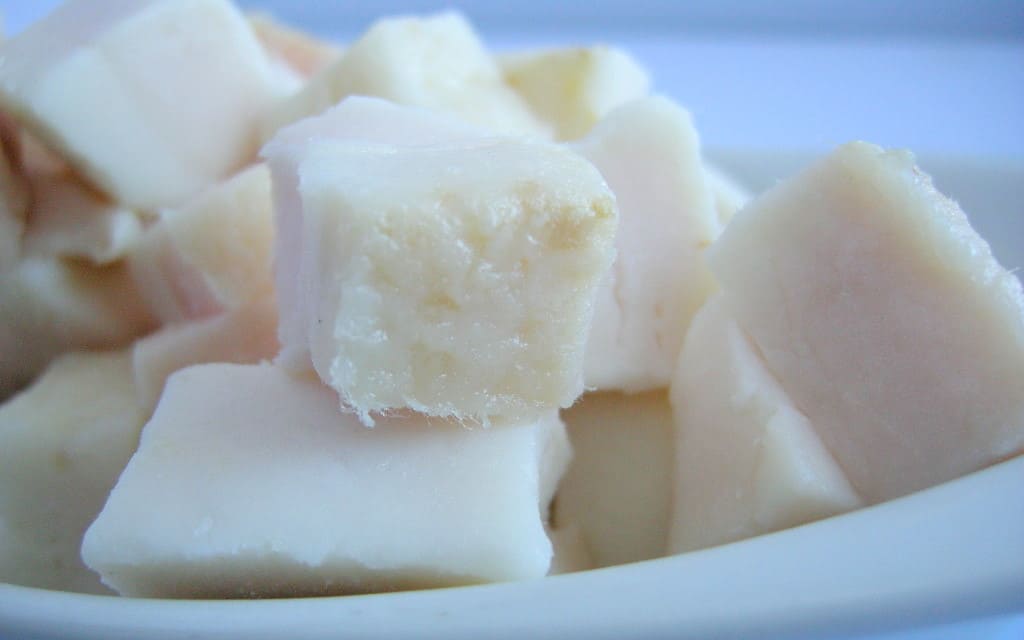{Secondary/Alternate Title: Yes, We are Those People}
My plan was to publish a post today about pocket meat pies. That post will need to wait a day because to make a meat pie, you need a sturdy savory crust. I believe that crust should start with one surprising but important ingredient: lard. I’ve gotten on my lard soap box before, so rather than beat it to death, I’ll simplify the conversation today and boil it down–so to speak (hardy har)–to a few quick paragraphs.
Why lard?
In the middle of the last century, well-meaning scientists told us saturated-fat-containing ingredients like lard caused heart disease, and law-abiding citizens ran fleeing from it. Since then, we’ve learned that the replacements for lard–like vegetable shortening–contain trans fats, which are much worse for you than saturated fat. Not only that, but lard also contains monounsaturated fat that is necessary for brain function. Even leaving health out of the discussion for a moment, I am sold on the idea of lard because I am a firm believer in nose-to-tail cooking. Hence, we actually eat tail from time to time
In a nutshell, lard is not your enemy, and the people who want you to go on believing it is have ulterior motives. Set aside what you think you know, do your research, and make your own decision.
Where can you buy lard?
To make lard, you need to get your hands on pork kidney fat called leaf lard. The reason you want leaf lard is that you can render it into a neutral fat that doesn’t taste of pork, assuming you cooked it low and slow enough. I’ll get to that part in a minute. We get our leaf lard for a $1/pound from a cooler at our monthly meat CSA. If you don’t have a CSA, I bet you can strike up a deal with any pork seller at your local farmer’s market if you’re friendly. Heck, you might even be able to get it already rendered from your butcher if you’re lucky.
Remember how I said I was going to start saying yes to ideas, even if they sounded scary or impossible? Ahem. To be frank, the rendering process is not as pleasant as I’d like it to be. But then, with a process called “rendering fat,” did you expect it to be pleasant? For one thing, it’s messy, in that “fat gets on things and won’t come off things” way. For another thing, it doesn’t look good. Mine wasn’t even photographable. For a third thing, it’s smelly. Not “I’m frying up some bacon” good smelly, but “I’ve been working in the kitchen of a 24-hour diner” bad smelly. I advise you to make a giant batch in one day, then hang on to it in your freezer for the next six months. Let it be a warm enough day that you can crack a window–for us, that’s around 40 degF, but our standards are influenced by the chilly Beantown climate.
 |
| Image credit: Nourished Kitchen |
How do you render lard?
Now that we’ve gotten the purchasing and caveats out of the way, let’s get down to cooking. The actual directions couldn’t be much simpler, so rather than reinvent the wheel I’m connecting to blogs that have already written them. If you are making a batch of savory lard and you don’t mind a slight porky flavor–in fact, you might even be going for that–you can make it in a Dutch oven on the stovetop. If you want it for sweet pie crust and don’t want it to taste like pork at all, then you should probably make it in a slow cooker. For either method, you’ll want to start by chopping the fat into small pieces (Note: if you’re getting it from the butcher, you can ask to have it ground, or you can do the grinding yourself if you have one of those sausage attachments on your stand mixer).
Here again are links to the two methods:
- Version A: Porky savory lard
- Version B: Sweet pastry lard
Tomorrow, we’ll delve into the fruits of our labor and discuss delectable meat pies. I promise it will all be worth the stinky effort.
Author’s Note: This post is part of Fight Back Friday Tasty Traditions Real Food Wednesday, Works for Me Wednesday, and Whole Foods Wednesday
